Text
odysseus absolutely does present a threat to penelope if he perceives her as at all unfaithful, and i feel the unfairness of this, and i think people tend to undersell how much tension at least potentially exists between odysseus and penelope. but i'm also like. his reaction, all speculation aside, his actual reaction in the odyssey to her flirting with the suitors is delight, because he immediately ascertains that she is running a con. sorry that they're so in-sync in spite of the forces that try to drive a wedge between them, including their own misgiving hearts. sorry that they invented homophrosyne ¯\_(ツ)_/¯
45K notes
·
View notes
Text

I know this isn't ninjago guys but I finished this 17 hour painting for my art class and I was proud of it so...enjoy.
I love Egypt fun fact about me. :)
6K notes
·
View notes
Text

Second attempt at tatting, not half bad if I say so myself.
10 notes
·
View notes
Text
Something I think I should correct: people did not gift museums tons of lace unsolicited. Or, at least, that’s not why museums have so much lace. Museums solicited a wild amount of lace because they felt it was a shortcut to establishing their reputations as sophisticated international museums.
What’s weird is the MET openly admits they were doing this and that’s why their lace collection is so large but I’ve still seen the misunderstanding that people’s great grandmothers’ just gave up expensive fabric they found at flea markets or something with holes, which they got great deals on it. That’s… that’s not what happened. It was very much wanted at the time. Like… that’s borderline misinformation and absolutely ridiculous. These are museums. They’re not secondhand stores???? Please reconsider.
Meanwhile, here in reality… they were fundraising specifically to buy lace collections. Huge lace collections. And then they bought more. You can read the excitement in the MET’s bulletins when someone buys them a new lace collection they tried to negotiate for but couldn’t afford. After already having plenty of lace! That’s how they ended up with 3000+ pieces! These were not unsolicited donations! That’s not why museums have such huge collections!
The MET also congratulated other museums on establishing or expanding their lace collections! Their bulletins are dripping with lace fervour! Learn who JP Morgan was!
6 notes
·
View notes
Text
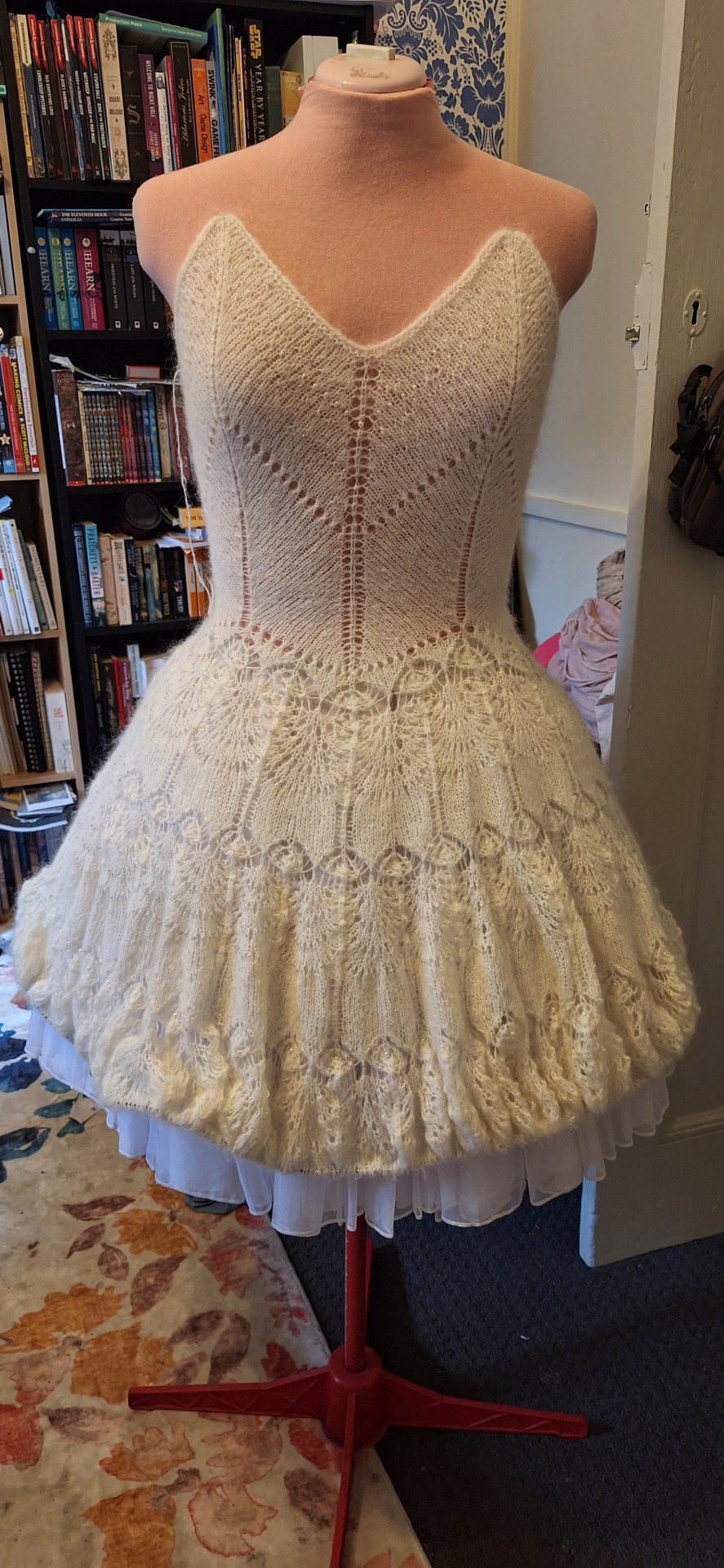
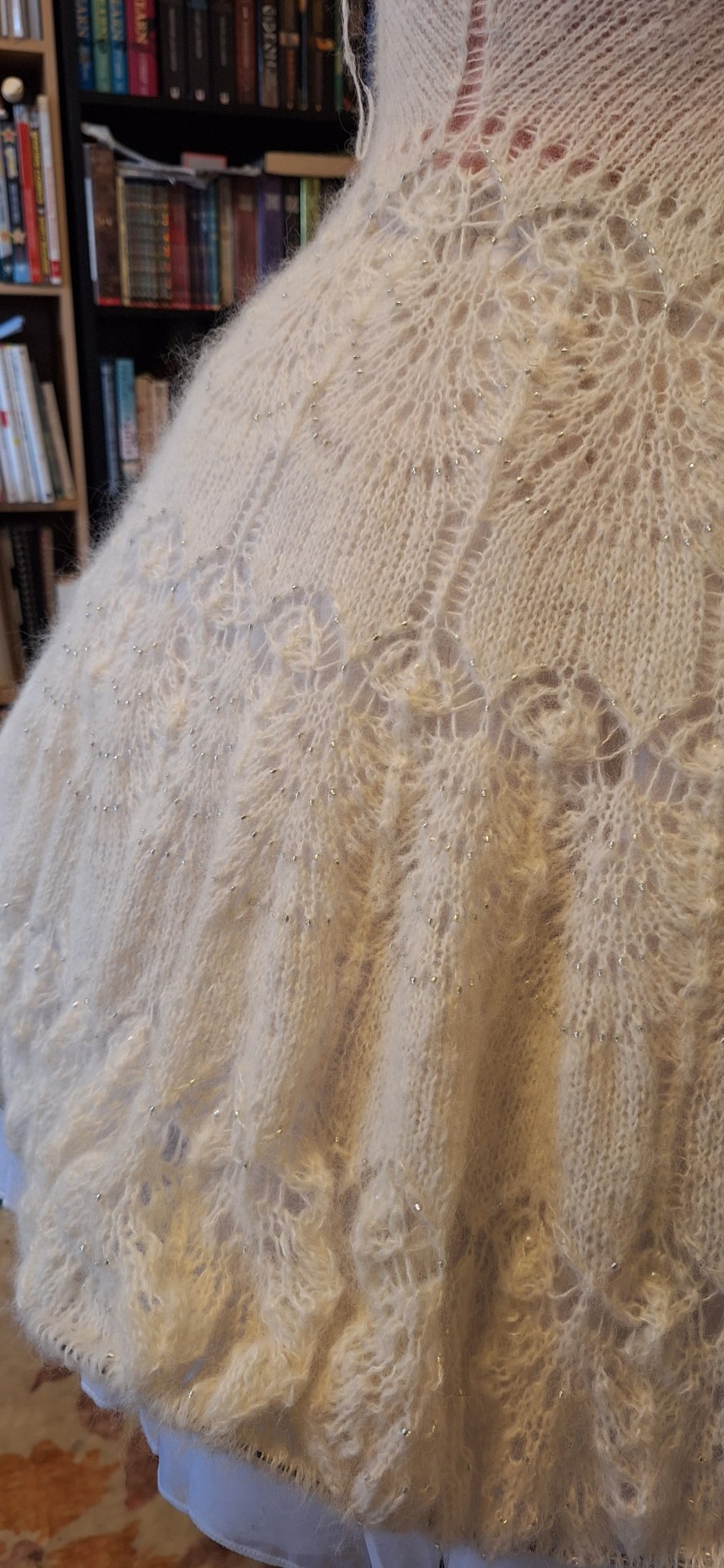

So I think I forgot to post about it here but I'm knitting my own wedding dress.
3K notes
·
View notes
Text

Update: it's a slow going, but I haven't given up yet, so I count that as a win. I'm learning so much through this, though - I can definitely see the progress I'm making. I've learnt how to make bobbin lace so many years ago, but this is the first big piece I've dared make, I kind of regret that now.
In other news, I've definitely underestimated the amount of thread that I'll need😆
25 notes
·
View notes
Text
i've been working on a depiction of a bufflehead in bobbin lace lately. i had some ambitious ideas about what sort of effects i would be able to create. like i'm still proud of what i've done but it doesn't look as cool as i had hoped
this is the reference image:

Picture credit: Mick Thompson
and this is what i have made so far:

i chose rose ground for the wings bc it's a cool looking stitch. problem is, it makes the wings appear spotted, like a loon. i know what stitch to use to make a loon body now though, so that's a positive. originally, i intended to just do cloth stitch all in black to create a solid mass and rose ground for the white body. i changed my mind bc i thought it was too simple and boring. should have followed the plan. oh well
the reflection of the duck in the water i did using cloth stitch; the workers (running vertically) are blue and the passives (horizontally) white. i did this to try to mimic how the rings of tiny waves kind of break up the reflection and create lateral lines in the photo. this might have worked better if i did a far closer weave (idk if there's a proper term for that). this part was supposed to go farther down the duck's body, but the workers broke :( and i had to undo a couple rows to get enough slack to make a knot :(. overall, i'm okay with how this looks, though
and the head. one of the most striking elements of the duck in the photo is its iridescent head. i'm using black workers and colorful passives to try to recreate this. the issue i have with it so far is how solid it is compared to the rose ground of the back. it makes the back seem even more spotty. i'm trying to reserve judgement on how the head looks until i've finished it. hopefully the white patch on the head will make it look more bufflehead-y than loon-y. also, i think i'll try a tally to depict the eye, which i've never done before. i've heard tallies can be difficult to tension, so it's so good i'm doing one for the first time as part of a large project lmao
another problem i've created for myself is that i'm using polyester thread. i heard i can block it by steaming it. hopefully that will hold the shape. i've added an element of danger to this project by not testing this on a smaller piece first
i still have to finish the head, do the body (idk why i left the middle piece until last), and decide if i should fill in the water or leave it empty. i'm treating this an as experiment and a learning experience. my goal is to create a bunch of imperfect bobbin lace, rather than getting stuck on one piece
i think i might make a loon next, since the rose ground seems to work so well. my lace society encourages members to enter at least one lace piece in a state or county fair each year, and i think a loon might be popular among potential judges. since it's for competition, i'll actually have to plan that one out impeccably
27 notes
·
View notes
Text
✨It is done✨
(well, almost)
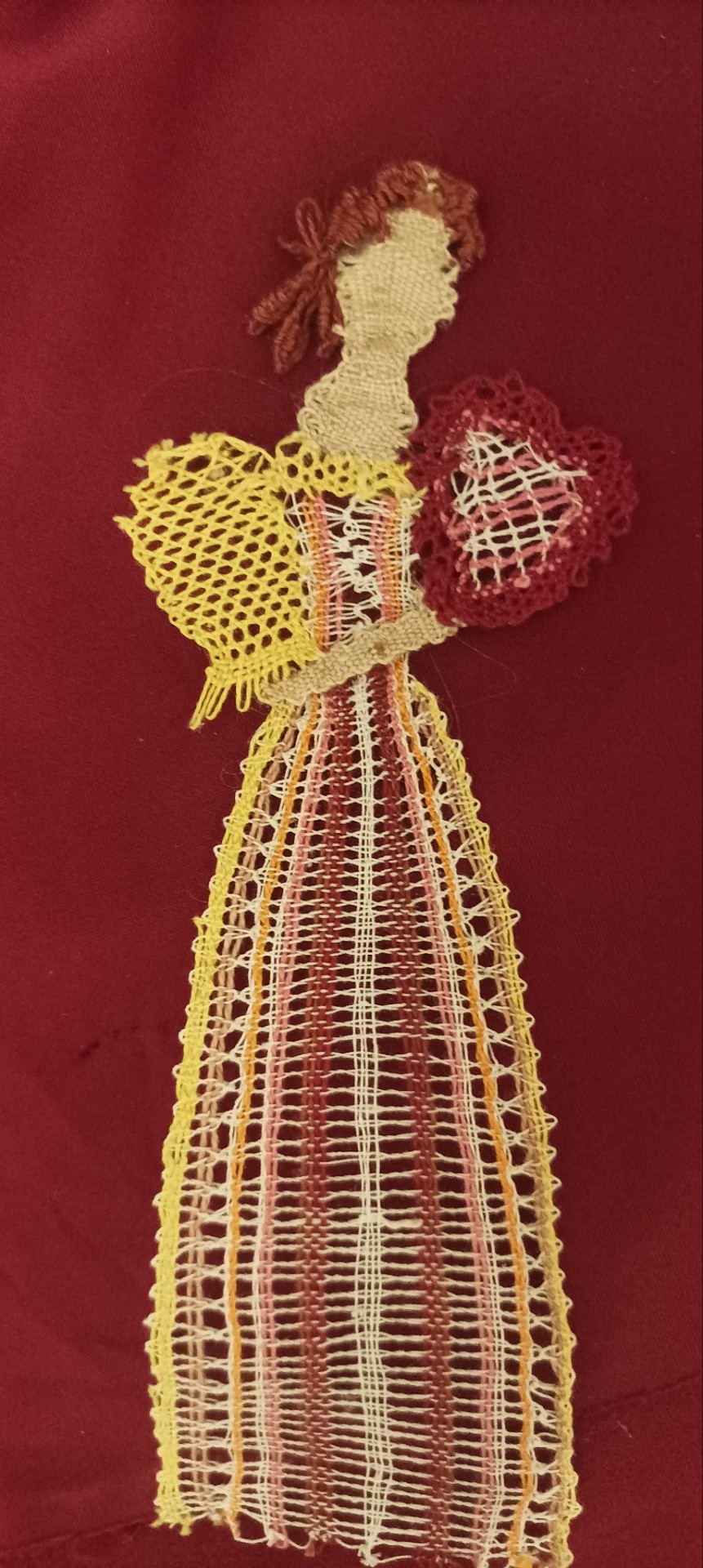

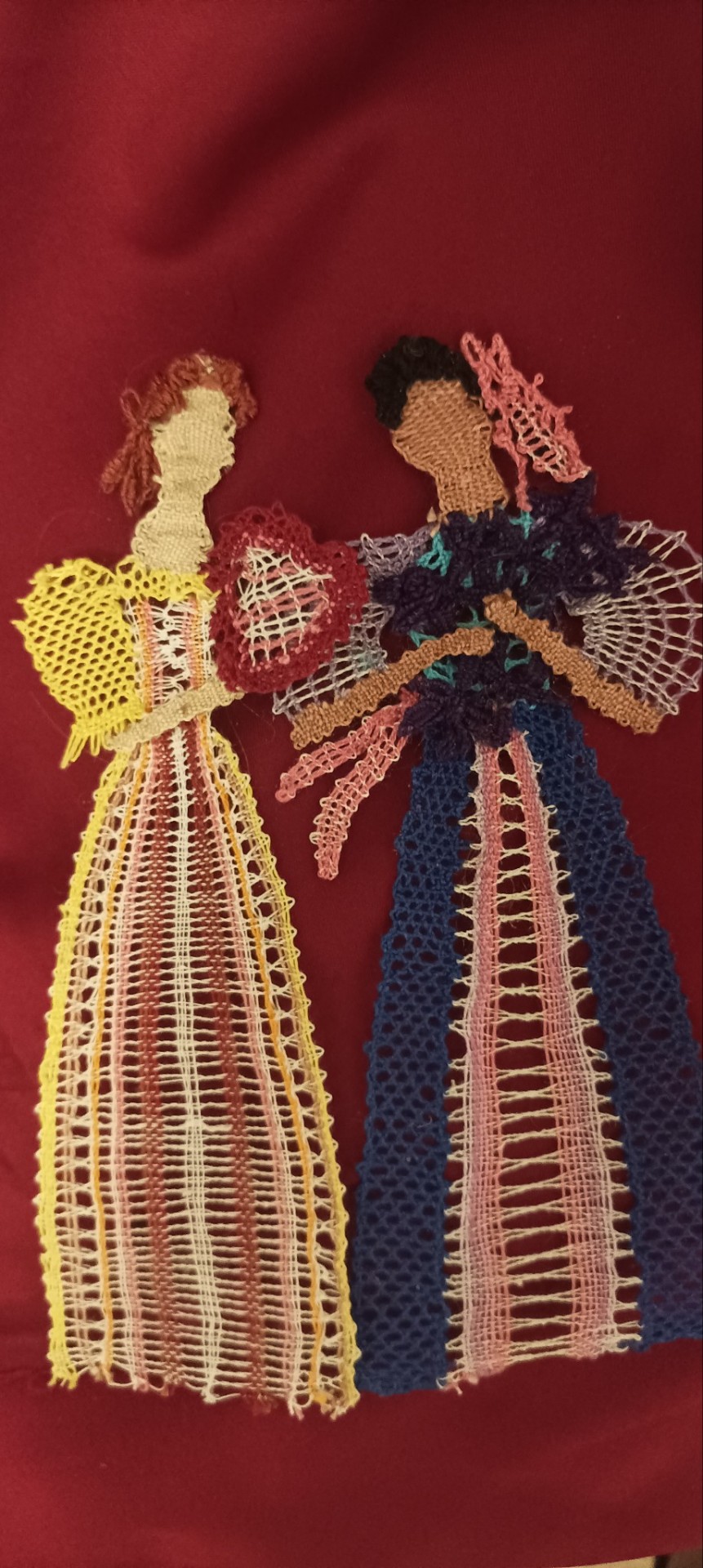
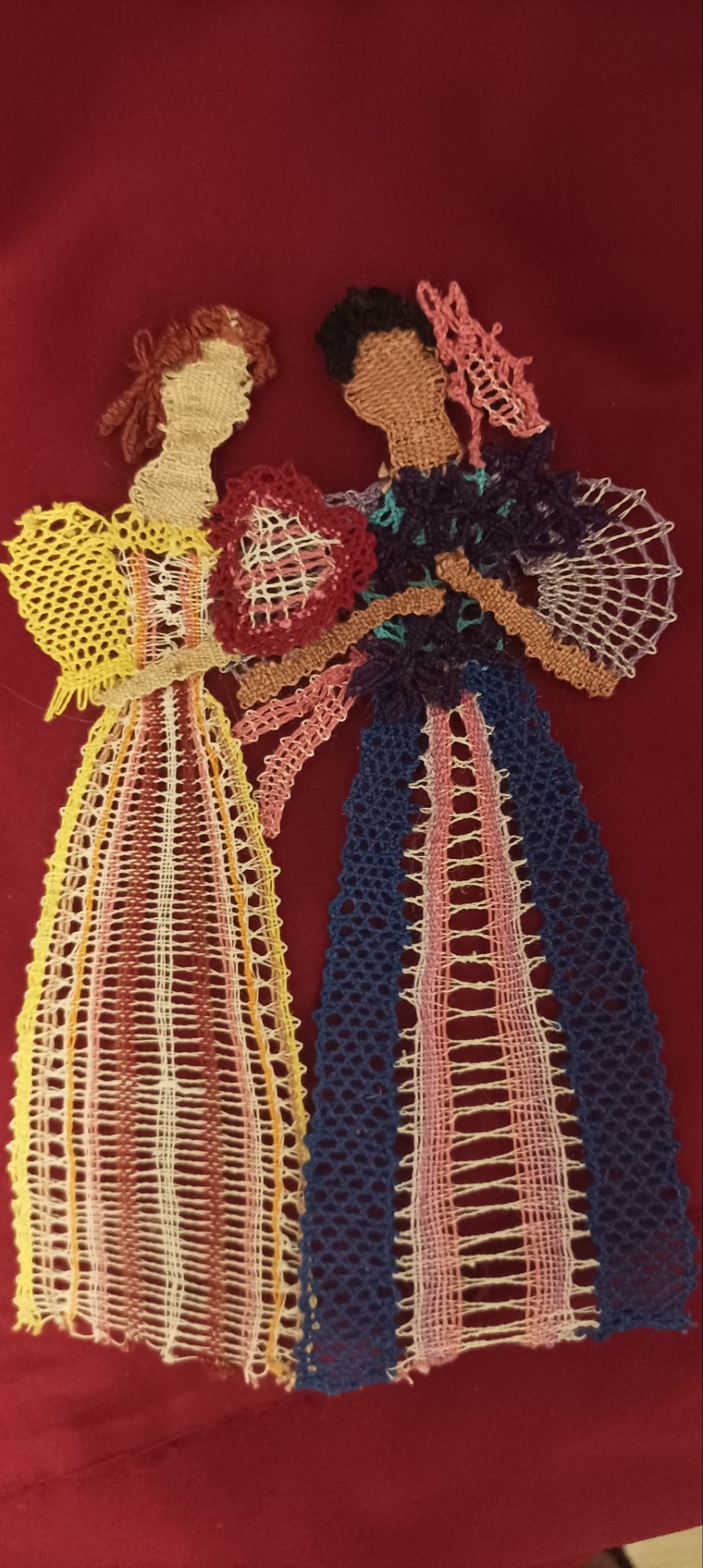
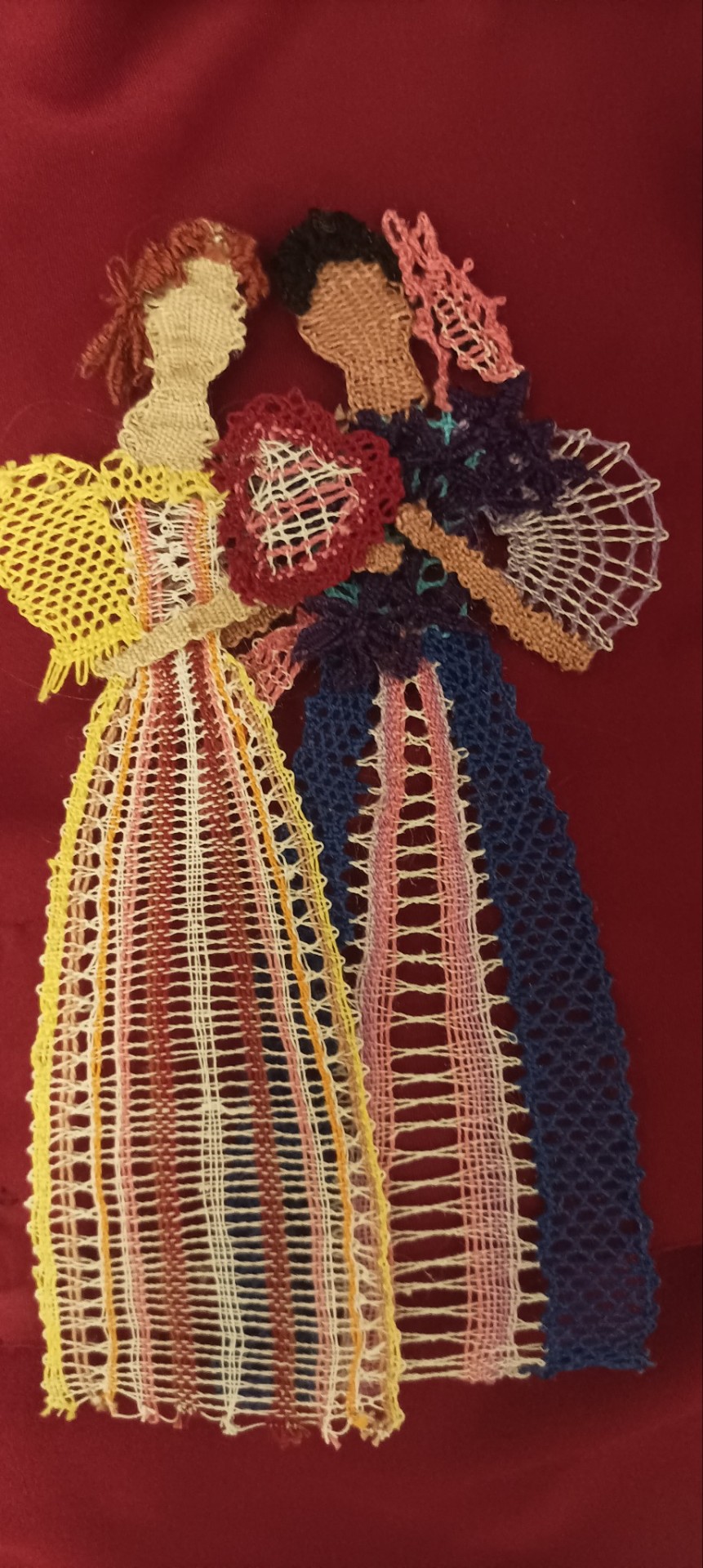
Now I need to find the best fabric and composition to sew them on because as fun as it is to play with them as if they were dolls, they are a bit fragile for that
47 notes
·
View notes
Text
You know what, since I'm thinking about it anyways, let's talk formalwear accessories. Most of these are traditionally menswear but a bit of gender fuckery is good for the soul, and frankly most of these are about making your mass-produced clothing fit and lay properly without having to go to the tailor.
Shirt stays: these go around your thighs to hold your shirt down, so that it stays smooth and tucked in. They're usually elastic, with 1-3 clips, and if you wear skirts frequently this is a GREAT way to make sure your top doesn't ride up. The clips will be visible if you're wearing something tight, so loose pants or skirts are where these do best. There's also an insane version that clips to your socks, but that is for lunatics. If you wanted, you could also use one of these clips to hold up thigh-highs.
These do a great job of smoothing and narrowing the waist area by keeping your shirt from bunching there.
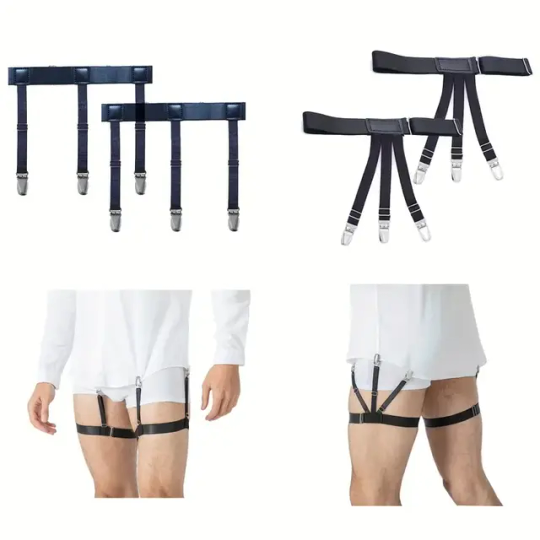

Sleeve garters: usually metal, leather, elastic, or silk. These are usually worn with button-down shirts to adjust where your cuff falls on the wrist or hand. They're properly worn on the upper arm, and you pull the fabric of the sleeve above the garter until you cuff is where you want it. Because this creates a puff of sleeve at the bicep, it also broadens the appearance of the shoulders. It's great if you're working with your hands or if your sleeves are often too long for your preference.

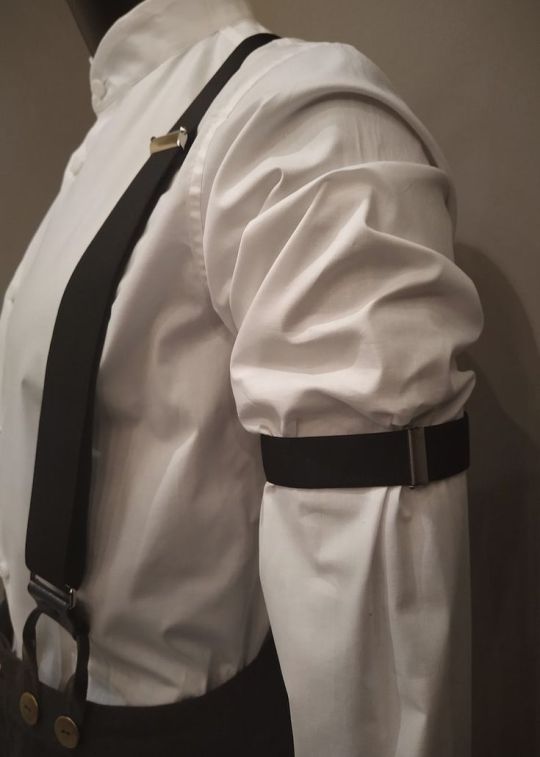
Waistband clip or belt adjustment clip/buttons
Three different ways of tightening the waistband of a pair of pants or a skirt. You're not going to get more than an inch or so tighter without weird bunching, and for most of these you'd want them to be hidden under a shirt or jacket, but they do the job if that's something you're having issues with.
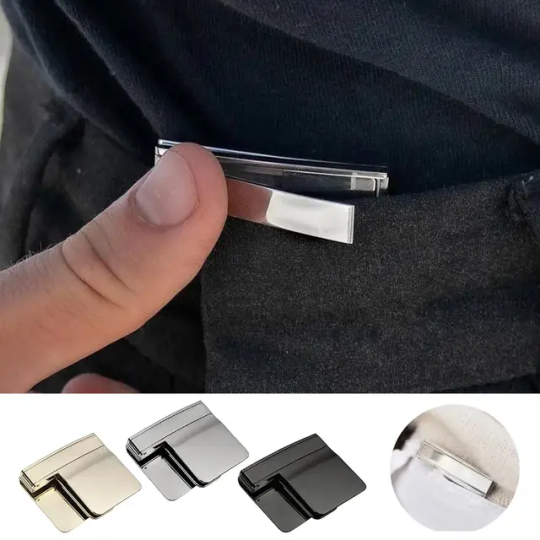
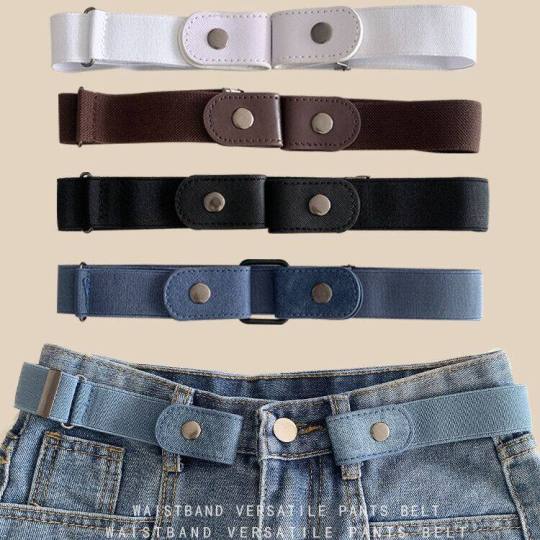
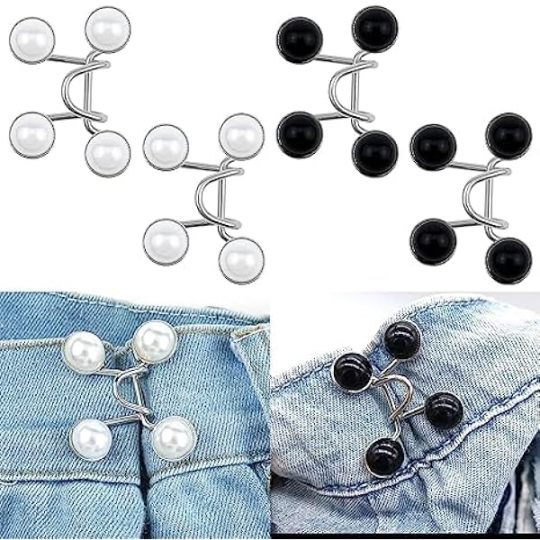
Collar pins: There are so many fun ones out there, both with and without chains. They're not terribly practical, though the slight weight may help keep your collar where you want it. Also consider collar tips, which pin (surprise) to the very tips of your collar points.
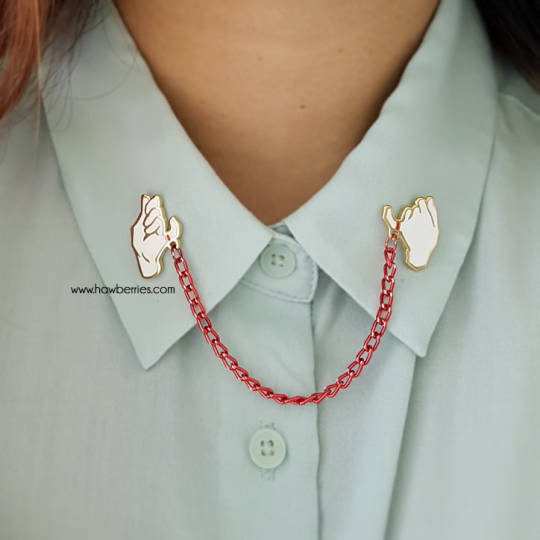


Sweater clips/guards: meant to hold your sweater or cardigan mostly closed. Great if your cardigan doesn't button, or if you don't like it to be buttoned all the way.
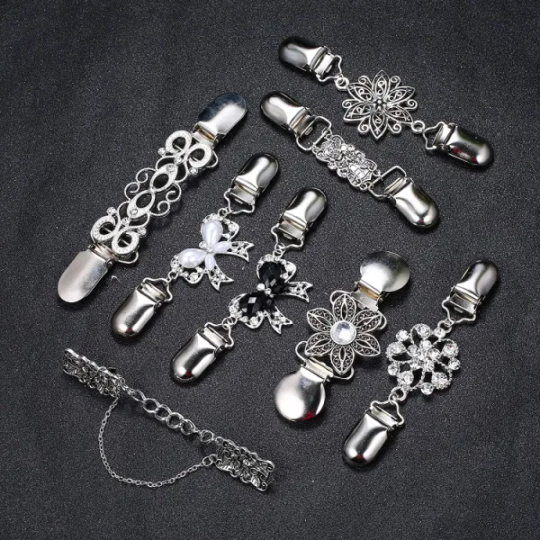
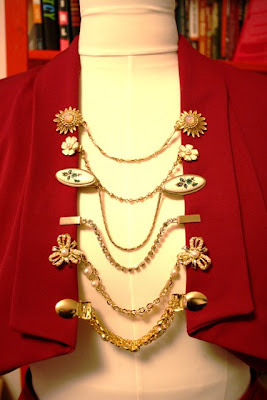
There's tons of other stuff out there like this--etsy is a great place to find this stuff. A lot of these are old solutions to the very modern problem of mass-maufactured clothes not being as one-size-fits-all as advertised, but they're also a fun way to put a bit of personality into businesswear.
9K notes
·
View notes
Text

first russian lace piece off the pillow!
tbh i thought the filling would never end but i definitely improved as i went
lil ace black sheep seems scared though, could use some comfort.... and perhaps a 4th leg
61 notes
·
View notes
Text
April, 2024 | Shetland lace shawl

Hi there! It’s been a while. I’ve been kept busy by all my university work…and this shawl.
The shawl is knitted to celebrate the wedding of my friend (now friends, I should say). A wedding is really the perfect excuse for all the heritage crafts and heirloom projects that might seem too serious to gift in other occasions. I did ask the recipient beforehand if she would like it, though, and I was so, so honoured that I got an enthusiastic ‘yes’. I’m sure this sentiment is shared by many makers, whatever gift they are making.
Shetland fine openwork, a knitted lace, seems to have emerged with the beginning of the reign of Queen Victoria, who championed and popularised the craft. It was probably spread from the Isle of Unst to other parts of Shetland. What surprised me the most when I first read about it was that Shetland shawls and other lace pieces were largely exported as luxury items and rarely worn by islanders themselves. Women bought yarn from spinners and knitted mostly in their homes. They then took them to local merchants and exchange the finished objects for goods or (commonly after the 1880s) money to supplement the household income. The ‘supplement’ nature of this work probably means it was not compensated as much as a job outside the home would be for the same hours and skills. Besides, it was not always easy to spin an even 1-ply yarn at 1600 metres per 100 grams. For a piece of knitting with a large ‘plain’ area (i.e. only knit stitches), the unevenness was impossible to hide but could only be discovered after the area was worked. Then the maker had to either frog (unravel) the area or continue with the risk of the whole piece not being able to sell.
Whilst it is very reasonable to point out that Shetland ladies did not usually wear this type of lace (I’ve been to the Scottish Highlands once, in summer, and it was not fine lace weather), I imagine that at least for some, it wasn’t just about making money. Some sort of fulfilment must have been from the satisfaction of having a piece ‘properly done’ by continuing and adapting a traditional pattern, technique or material. I think this sort of satisfaction is also why many modern knitters are willing to spend hundreds of hours on lacework.
Intricate handknitted lace items can still be bought today (a quick search on Etsy would show many are form eastern European countries with a long and prominent craft tradition), but many are knitted for friends or family members. It always makes me so happy to see people share the gifts they have made, whether big or small, simple or complex. I joke with my online craft friends that no handmade fibre project can claim to be so unless they have a hair or two woven into it. It is the proof of existence for the maker, who tries to go against the irregular nature of handicrafts and, at the same time, accepts it. It is about wrapping up hours, weeks or months in one’s life, along with the songs they have listened to and the perfume they have worn and the memories they have made, and putting it squarely in someone else’s hands and saying: ‘All this, for you.’

A Wedding Shawl
I have not read anything about there being a standard form of ‘wedding shawl’ in the Shetland tradition. However, there is definitely a category of square shawls with similar sizes and a few construction methods. The samples I’ve seen mostly measure 1.5-2m on one side and have three parts: a central panel, four borders and a strip of edging. It is worked flat in garter lace from centre out.
Neither is there a standardised yarn weight. A widely available yarn is the Shetland Supreme Lace Weight 1-ply by Jamieson and Smith, which weighs at 400m/25g. The Queen Ring Shawl examined by Sharon Miller used a yarn at 700m/25g. From my experience, if you want the shawl to be a true ring shawl (i.e. you want to be able to pull the shawl through a ring) at the size of the Queen Ring Shawl (210cm on the side), go for 700m/25g or finer.
I chose a rectangular shawl because I had very limited time, but I did enlarge it because for me, an abundance of fabric does mean an abundance of cozy happiness.
Pattern
Shell Grid and Spider Webs Puzzle, pattern No.19 in the book Shetland Knitting Lace by Toshiyuki Shimada.
The names of the motifs are confusing. One motif (or two highly similar motifs) might just have two different names if they are produced in two different regions. Names do not mean everything, but I’ve had fun trying to match the motifs with names according to this article by Carol Christiansen at the Shetland Museum.
The double yarnovers (YO’s) in the diamonds were called Cat’s Eye, but perhaps the ’Spider Web’ in the pattern name is referring to the three rows of double YO’s in the centre panel. It has a really simple but effected edging.
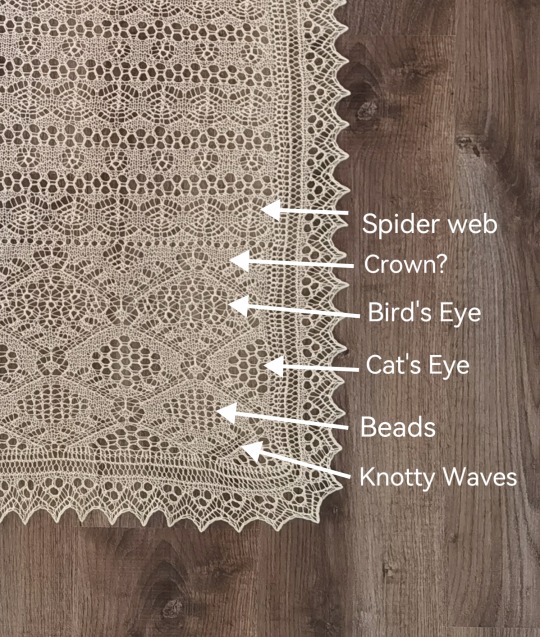
Yarn
Mermaid Lace, in colourway #naturel, sold by Great British Wool in the Netherlands. This yarn is 75% merino and 25% sea algae silk. ‘Sea algae silk’ seems to be a semi-synthetic plant fibre like viscose, with algae involved as part of the raw material. (At this price point I don’t think it has anything to do with sea silk, which is fibre produced by actual shells.) The brand name for the most popular product of its type is probably Seacell.
I bought the yarn, because I had never worked with this fibre before and was curious. What I like: it was a little cheaper than a wool/silk blend and has blocked very well. The whole skein was continuous so I didn’t have to deal with a single yarn joint. What I do not like: it lacks the sheen and smoothness of real silk and doesn’t feel as strong, although it doesn’t shed. In conclusion, I’d rather use a traditional Shetland 1-ply or another natural fibre yarn.
It's also worth mentioning that whilst I prefer to support small businesses, it was disappointing to have received a 93-gram skein when I had ordered 100 grams. It was one of those days between Christmas and the New Year and I somehow did not contact the customer service, but I really should have.
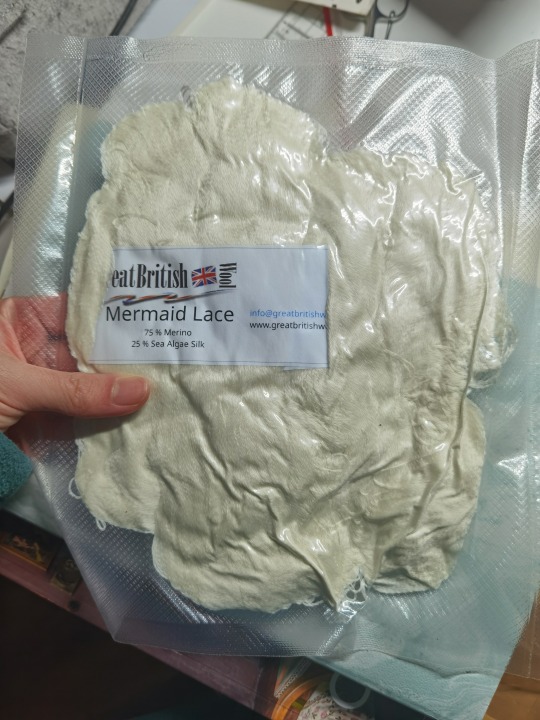
Needle
2.5mm 80cm circular needles. See modification below.
Modification
This Japanese knitting book follows Japanese sizing for knitting needles. The suggested size was no. 1=2.4mm. I figured that I could use a 2.5mm since I knitted on the tighter side, and in any case it was probably okay to make the lacework a little more open by going up a needle size.
I am not going to give out the pattern, but it is probably necessary to explain the structure of this shawl. The centre is knitted first, and then an edging is knitted onto it by picking up either live stitches or the vertical edge of the centre as you go (see schematic below). The four ‘corners’ of the edging have short-row shaping to help it lay flat. I know that traditionally people can achieve this by other methods, but I haven’t tried any of those yet.
I enlarged the pattern by increasing both the width and the length. I casted on 133 stitches instead of 101 for the centre panel and knitted Part B 8.5 times instead of 5.5. The spider web pattern in Part B requires the stitch count to be (something dividable by four) plus two, so I made one central increase before the spider web to get 134 and a central decrease after it to get it back to 133. Due to the openness of the lace, the change of one stitch is not visible.
The enlargement meant I had to recalculate the edging as well, because the number of stitches available for pick-up changed. Originally, at each corner you do two repeats with four short-row shaping each. I did 1.5 repeats following the original placement of short-row shaping in order to make the total number of repeats fit the number of edge stitches on the centre panel.
The pattern says to Kitchener-stitch the last row of the edging to the provisional cast-on. It just didn’t make sense because that would be two rows too much (the Kitchener stitch row plus the provisional cast-on row). To make the number perfectly fit, I knitted only ten rows of the last repeat (there were usually twelve in each repeat). Then I Kitchener-stitched the end to the provisional cast-on, following the lace pattern. I am quite proud of this solution because it is completely invisible.
Somewhere in the pattern it said to purl (looking from the right side). It seemed strange because the rest of the lace was entirely garter. I knitted those stitches and so far I haven’t sensed a ‘mistake’.
The pattern originally calls for 45 grams of yarn. I estimated (based on the increase of stitches in the centre panel) to need about 80 grams. I ended up using 86 grams. Besides the inaccuracies in my estimation, it was probably also because I knitted much more loosely than expected as it was difficult to tension the yarn tightly at such a weight. Like I’ve point out in the Yarn section above, I was lucky not to have needed more than 93 grams.
The original finished size is 53*118cm. I ended up with approximately 70*170cm.

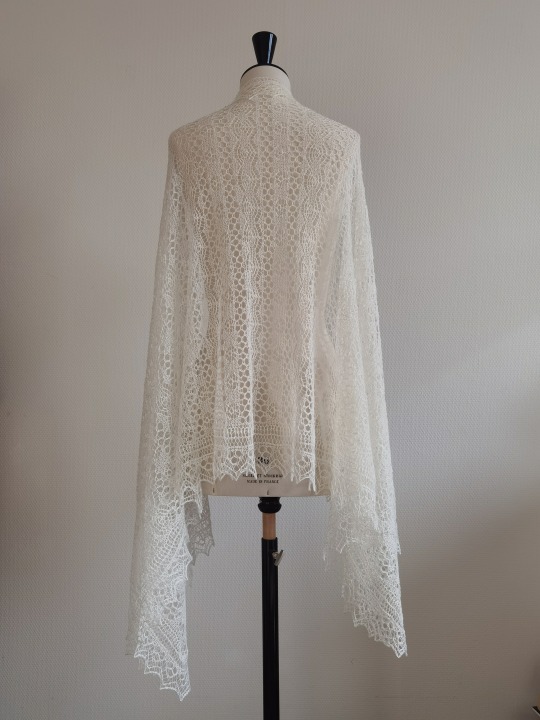


Conclusion
This shawl took about three months of my craft time i.e. one full day every week for three months and many mornings before I had to leave for university. Knitting outside my room just didn’t work because I was a) engaged in some other activities that made it difficult to steady my hands, and b) worried about putting a white shawl on any public surface.
The pattern itself is relatively straightforward. The first difficulty was, of course, to understand the instruction written in Japanese. Google translate was horrible so I had to rely on my knitting experience. Fortunately, much of the text description was also found in graphs and charts. Then I had to get my hands used to the tiny yarn. After that, it was only fiddly when I did the edging, because I had to turn about every twelve stitches, and by that time I was handling a giant cloud of stitches on my lap. It did give me a lot of time to go over my favourite documentaries and films, and the last bit of edging was surprisingly quick!
Traditionally, Shetland shawls could be sent back to the maker for maintenance. I think it only fair for me to offer that too because I don’t want a gift to become a trouble (same as how you do not use non-machine-washable yarn for baby knits).
In general, I am very pleased with this shawl. It does pass the ring test, despite not being a traditional wedding shawl size or thickness. I do have a whole lot of actual Shetland 1-ply in my stash, so I am really looking forward to taking my Queen Ring Shawl project out of hibernation in the near future.

Reference list for Introduction
Christiansen, Carol. Shetland fine lace knitting: Recreating patterns from the past. Marlborough: Crowood, 2024.
Mann, Joanna. 'Knitting the Archive: Shetland Lace and Ecologies of Skilled Practice'. Cultural Geographies 25, no. 1 (January 28, 2017): 91–106. https://doi.org/10.1177/1474474016688911.
232 notes
·
View notes
Text
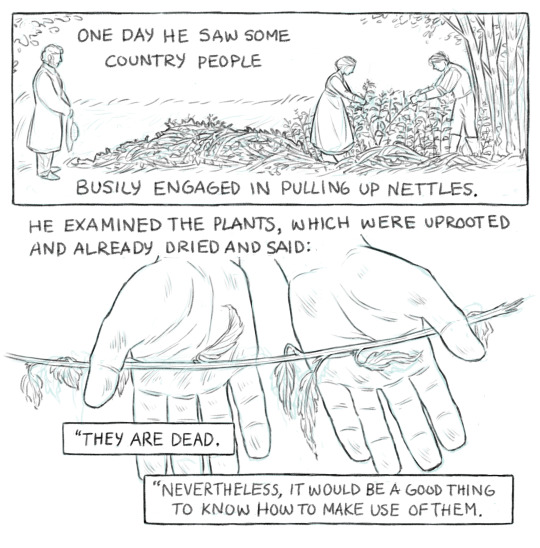


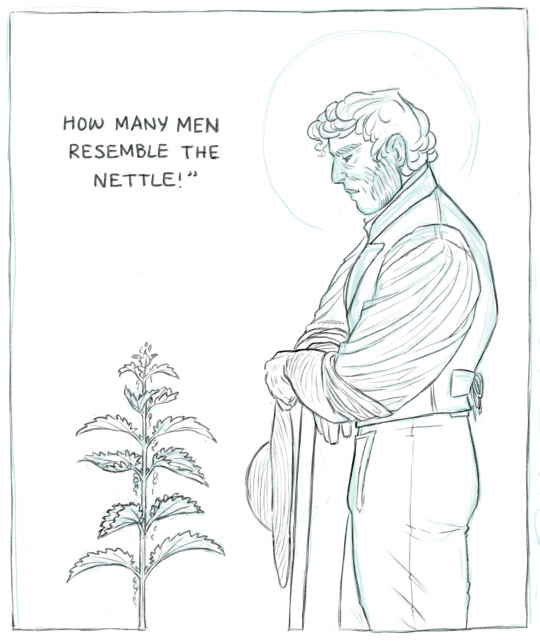
He added, after a pause: “Remember this, my friends: there are no such things as bad plants or bad men. There are only bad cultivators.”
Les Misérables, Volume I / Book V / Chapter III, trans. Hapgood
44K notes
·
View notes
Text
i am at the risk of sounding like a victorian, but would anyone buy hand bobbin lace bookmarks from me?
i need to buy some things for uni in October, but it would also just be nice to have some money for once as i have not had a job for about six years and have lost disability benefits
i am looking for some sort of price point and to see if there is any interest with this post so let me know what you think through comments, answering the poll or dming me, thank you so much
some details:
- each bookmark takes me about two to three days to complete
- the thread used costs £4 a reel
- it will come with a protective plastic sleeve
- i am a beginner and this is torchon lace



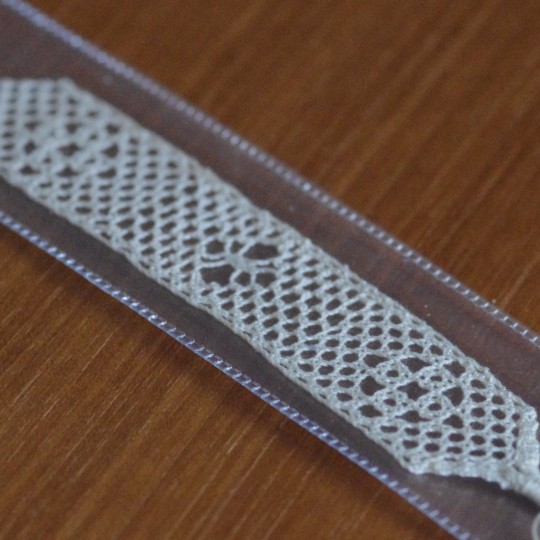
23 notes
·
View notes


